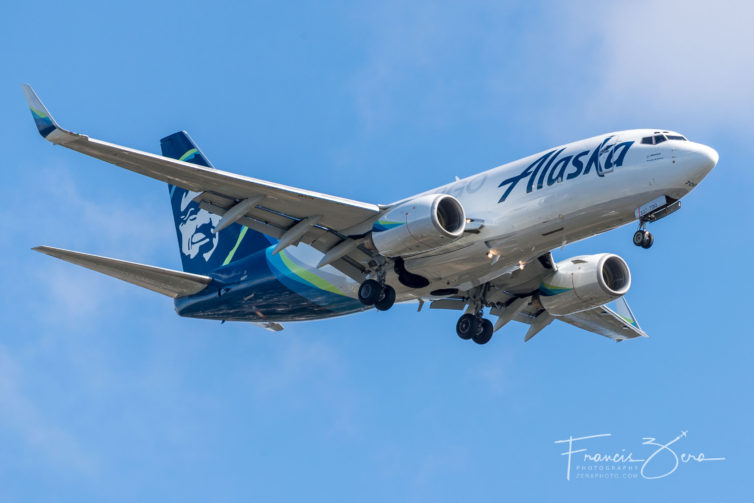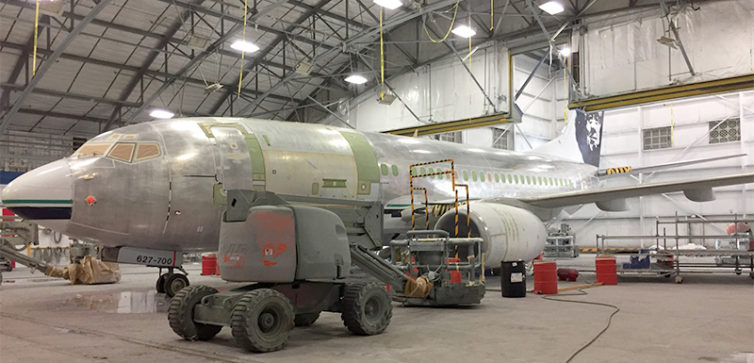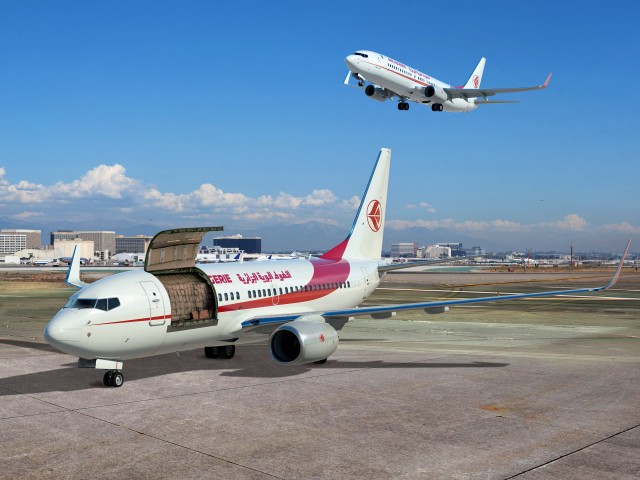
Alaska Airlines’ newly-converted 737-700 freighter on a recent flight from Anchorage to Seattle
Alaska Airlines recently added a new type of aircraft to its fleet: an all-cargo Boeing 737-700, converted from one of their passenger jets.

Alaska’s first completed 737-700 freighter being prepped for paint in Victorville, Calif – Photo: Mike Hogan (manager, Alaska Airlines vendor maintenance)
The conversion was completed in Tel Aviv by Israel Aerospace Industries. The plane was ferried to Israel in 2016, and the conversion process took a total of 19 months. Now that the necessary protocols and systems have been developed, subsequent conversions will be completed at a faster rate.

Composite image of an Air Algerie Boeing 737-700C – Image: Boeing
The Boeing 737-700C is an interesting aircraft. What makes it unique is its ability to convert from passengers to cargo depending on how the airline wants to use it. If you have heavy passenger flow during the summer, but more cargo during the winter, being able to convert between the two is quite helpful.
What also makes the 737-700C unique is that, like the Boeing Business Jet (BBJ), it has strengthened wings, different than the standard passenger 737-700. When in passenger configuration, the plane can hold 120-140 seats and fly 3,205nm. In an all-cargo set up, it can haul 40,000 pounds and fly 2,880nm.
The model was launched back in September 1997, when the US Naval Reserve ordered two and called them the C-40A Clipper. This was a big deal, since there had not been a convertible version of the 737 built from the Next Generation-version of the 737 at the time.
The US Navy currently operates 12 C-40As to move personnel and supplies around the world. Think of it as an airliner for the military.


